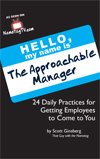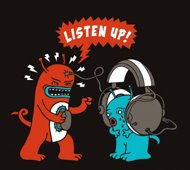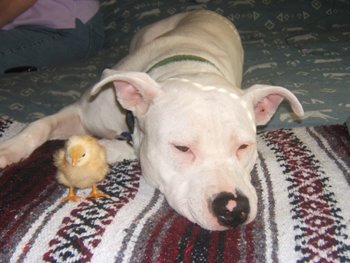 The secret to growing bigger ears is listening for the intangible forces behind people’s physical expressions.
The secret to growing bigger ears is listening for the intangible forces behind people’s physical expressions.
So, as you sit down to listen to your employee, customer or spouse, I want you think of yourself as an archaeologist. Prepare yourself to dig deep. And be on the lookout for the four intangible forces of listening:
1. THEIR CORE.
a. Listen for what they value. Something they stand for.
b. Listen for the appearance of vision and purpose. Something that aligns them.
c. Listen for what makes issues important in their lives. Something that drives them.
SO, WONDER: What is this person (really) committed to, after all?
SO, WONDER: What values are at work here?
2. THEIR PASSIONS.
a. Listen for what someone treasures. Something they’d die for.
b. Listen for what makes them come alive. Something that burns deep inside.
c. Listen for what makes them withdraw. Something that holds them back.
SO, WONDER: What is at work here?
SO, WONDER: What is emerging now?
3. THEIR EVASIONS.
a. Listen for resistance. Something they back away from.
b. Listen for avoidance. Something they don’t want to deal with.
c. Listen for hesitation. Something they’re uncertain about.
SO, WONDER: Where is it this person doesn’t want to go?
SO, WONDER: What is it the person doesn’t want to deal with?
4. THEIR DANGERS.
a. Listen for fear. Something that terrifies them.
b. Listen for self-sabotage. Something they unconsciously inflict upon themselves.
c. Listen for imbalance. Something that throws them out of whack.
SO, WONDER: What message was sent but not spoken?
SO, WONDER: What is this person’s immediate experience?
5. THEIR GAPS.
a. Listen for cognitive dissonance. Something that divides them.
b. Listen for incongruity. Something that doesn’t match up.
c. Listen for contradiction. Something that seems inconsistent.
SO, WONDER: What disconnect could you help this person realize?
SO, WONDER: What gap can you help this person bridge?
OK, Indiana. Now that you’ve entered the conversation with curiosity and noticed people’s intangibles tendencies, the next step is to articulate what’s going on.
That means sniffing out falsehoods.
That means helping them connect the dots.
That means telling them what you see them doing.
That means naming things out loud to realign with them.
That means illuminating truth and helping them recognize it.
That means noticing the nuances they haven’t brought into their consciousness yet.
Here are four Phrases That Payses to help verbalize your observations in a curious, objective and non-threatening manner:
1. “I have an observation.” Calling your comment an observation makes it neutral. You simply say what you see. Focusing on the behavior, not the person. The best part is, nobody can dispute it because it’s completely subjective.
2. “My intuition tells me that…” By explaining that you “sense” something – in your gut, in your heart, in your soul – your comment immediately becomes neutral and irrefutable. What’s more, speaking from intuition shows that you’re truly listening with your heart and from your core.
3. “That statement doesn’t sound consistent with your values.” The key here is to focus on the statement, not the person who made it. Doing so will automatically cause someone to stop, recognize their cognitive dissonance and reassess their behavior.
4. “I’m curious about that line of thinking…” This statement is observational and focused on the thought, not the thinker. Also, this language reinforces the initial goal of “entering the conversation with curiosity.”
REMEMBER: Listening is Archaeology.
It’s about entering the conversation with curiosity.
It’s about noticing people’s intangible tendencies.
It’s about excavating and illuminating truth.
Put on your Fedora and start digging.
LET ME ASK YA THIS…
How do you uncover priceless treasure in the archaeological dig known as listening?
LET ME SUGGEST THIS…
For the list called, “53 Not So Obvious Patterns Listeners Need to Listen For,” send an email to me, and I’ll send you the list for free!
* * * *
Scott Ginsberg
That Guy with the Nametag
Author, Speaker, Coach, Entrepreneur
[email protected]
 If they can’t come UP to you; how will they ever get BEHIND you?
If they can’t come UP to you; how will they ever get BEHIND you?
Buy Scott’s new book and learn daily practices for becoming a more approachable manager!
Pick up your copy (or a case!) right here.

 When you label, you judge.
When you label, you judge.
 If you want to grow bigger ears, remember these four words:
If you want to grow bigger ears, remember these four words:  My doctor, the great
My doctor, the great 
 My yoga teacher made a powerful comment in class yesterday.
My yoga teacher made a powerful comment in class yesterday. As a writer, it’s almost impossible for me to read a book, have a conversation or experience ANYTHING without writing something down.
As a writer, it’s almost impossible for me to read a book, have a conversation or experience ANYTHING without writing something down. “Yeah, but what does that have to do with MY problem?”
“Yeah, but what does that have to do with MY problem?” The first irony:
The first irony:
 Growing bigger ears is about listening to others, listening to the world, and of course, listening to YOURSELF.
Growing bigger ears is about listening to others, listening to the world, and of course, listening to YOURSELF.